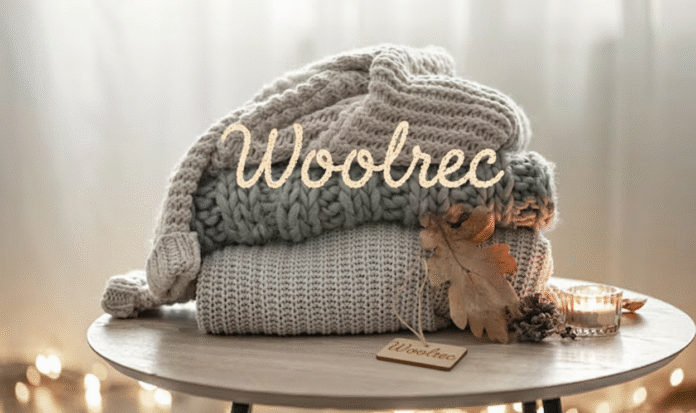Sustainability has become more than just a trend; it is a responsibility shared by industries worldwide. Among the many sectors embracing eco-friendly practices, wool recycling has started to gain significant attention. Woolrec, a forward-thinking initiative, is transforming the way we perceive discarded textiles. By reintroducing waste wool into the production cycle, it not only minimizes landfill impact but also supports a circular economy that benefits both the environment and future generations.
The Story Behind Woolrec
Wool has been an essential fiber for centuries, valued for its warmth, durability, and versatility. However, the disposal of woolen products has always posed a challenge. Traditional waste management methods often resulted in burned or buried wool, causing both pollution and resource loss. Woolrec emerged to change this narrative by creating a systematic approach to recycling wool in a way that preserves its natural qualities while reducing environmental harm.
Why Wool Needed a Second Life
Unlike synthetic fabrics, wool is biodegradable, but improper disposal still contributes to waste accumulation. With increasing awareness of climate change and resource scarcity, industries began seeking alternatives. Woolrec’s model offered a sustainable path by recovering fibers and converting them into new yarns, fabrics, or insulation materials without compromising quality.
How Woolrec Works
The process behind Woolrec is both scientific and creative. It involves a series of steps that ensure waste wool regains its utility in practical and innovative ways.
Collection and Sorting
The journey begins with gathering discarded wool garments and fabrics. These are carefully sorted based on fiber type, color, and condition to determine the best recycling pathway. Sorting is crucial, as it defines whether wool will be reused in apparel, industrial textiles, or alternative products.
Cleaning and Processing
After sorting, wool undergoes a cleaning process to remove dirt, oils, and dyes. This stage ensures that the recycled fibers are safe and of high quality. Processing methods, such as mechanical shredding, turn old garments into usable fibers ready for spinning.
Spinning and Repurposing
The recovered fibers are then spun into yarn or blended with other natural fibers to create new products. These materials often find their way back into fashion, upholstery, and even eco-friendly home insulation.
Environmental Impact of Woolrec
The benefits of wool recycling extend far beyond reducing waste. Woolrec has positioned itself as a key player in combating climate change and promoting sustainable production.
Reduction of Landfill Waste
Each year, millions of tons of textiles end up in landfills. Woolrec’s recycling efforts significantly cut down on this burden, ensuring wool is not wasted but reused.
Lower Carbon Footprint
Producing new textiles requires energy, water, and raw resources. By reusing existing wool, Woolrec reduces the demand for virgin wool production, thereby lowering greenhouse gas emissions and conserving natural resources.
Promoting Circular Economy
Instead of following a “make, use, dispose” cycle, Woolrec encourages a closed-loop system where resources continuously flow back into production. This not only conserves resources but also fosters a culture of responsibility among manufacturers and consumers.
Woolrec in Fashion and Lifestyle
Sustainability in fashion is no longer optional—it is a necessity. Woolrec has found a special place in the fashion industry by offering designers and brands a sustainable alternative.
Eco-Friendly Fashion
Clothing brands are increasingly adopting recycled wool to create stylish, durable, and eco-conscious collections. This approach appeals to modern consumers who prioritize sustainability without compromising aesthetics.
Home and Industrial Uses
Beyond fashion, recycled wool is being used in furniture, acoustic insulation, and even in the automotive sector. Its natural insulating properties make it versatile and highly sought after in industries aiming to reduce environmental footprints.
Challenges Woolrec Faces
Despite its promise, wool recycling still encounters certain challenges that must be addressed for wider adoption.
Limited Consumer Awareness
Many consumers remain unaware of textile recycling opportunities. Without proper education, discarded wool often ends up in general waste instead of being recycled.
Processing Costs
While eco-friendly, the recycling process can sometimes be costly, making products slightly more expensive. Wider adoption and technological advancements are expected to reduce these costs over time.
Need for Industry Collaboration
For Woolrec to reach its full potential, industries must collaborate. Designers, manufacturers, and consumers all play vital roles in ensuring recycled wool gains mainstream acceptance.
The Future of Woolrec
As global emphasis on sustainability intensifies, Woolrec is poised for remarkable growth. Innovations in textile technology are likely to make wool recycling even more efficient and affordable. Governments and organizations are also offering stronger support for circular economy initiatives, further boosting the relevance of Woolrec.
In the near future, recycled wool could become a default choice in clothing lines, home furnishing, and industrial applications. By integrating sustainable practices, Woolrec demonstrates that eco-consciousness can coexist with style, comfort, and innovation.
FAQs
What is Woolrec?
Woolrec is a sustainability-driven initiative focused on recycling wool fibers from discarded textiles and reintroducing them into new production cycles.
How is recycled wool different from new wool?
Recycled wool maintains most of the qualities of virgin wool, such as warmth and durability, but is more environmentally friendly since it reduces waste and resource consumption.
Can recycled wool be used in fashion?
Yes, many fashion brands use recycled wool to create eco-friendly garments that are stylish, comfortable, and sustainable.
Why is wool recycling important?
Wool recycling helps reduce landfill waste, lowers carbon emissions, and supports a circular economy by reusing valuable natural fibers.
Is Woolrec only for clothing?
No, recycled wool is also used in home furnishings, industrial insulation, and even in sectors like automotive manufacturing.
Conclusion
Woolrec represents more than just a recycling process—it embodies a shift toward sustainable living. By giving wool a second life, it reduces environmental waste, conserves resources, and inspires industries to think more responsibly. While challenges exist, the growing awareness of sustainability ensures Woolrec will continue to play a crucial role in shaping a greener, more sustainable future.
Stay in touch to get more updates & alerts on Technofeed! Thank you


